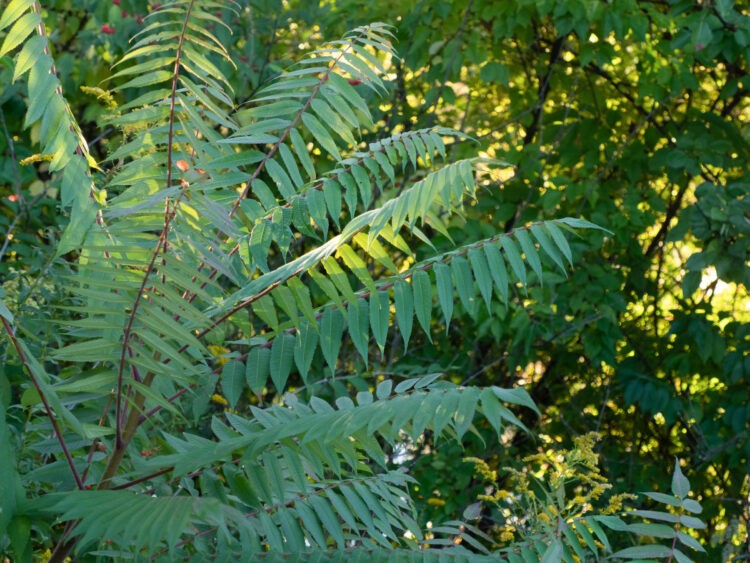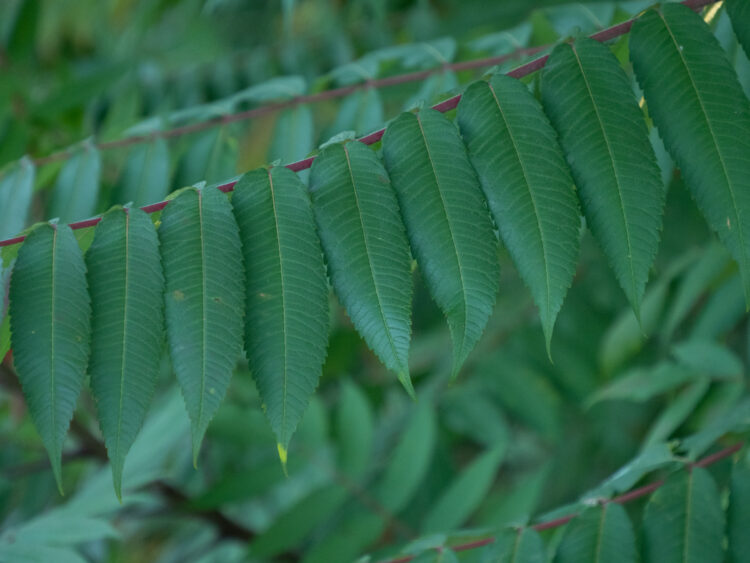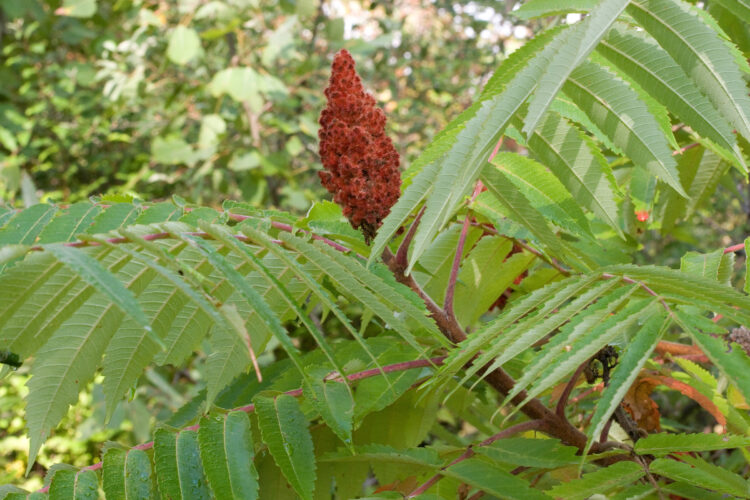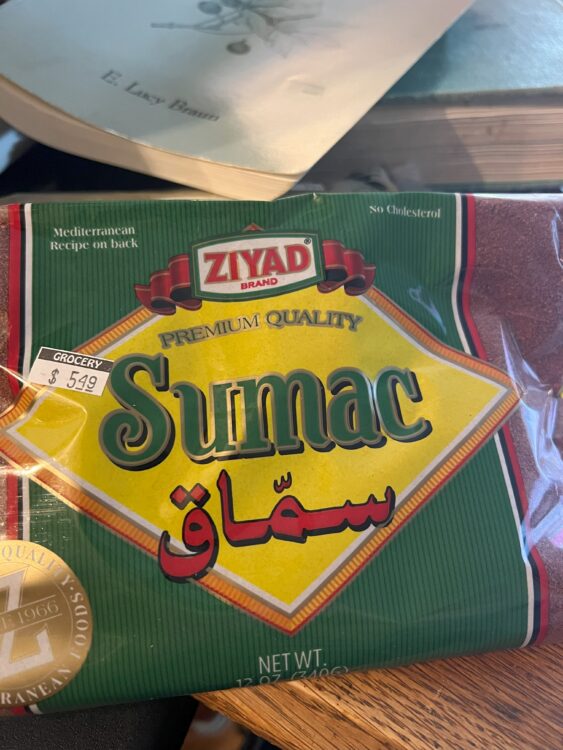staghorn sumac (Rhus typhina)
Anacardiaceae, the cashew family
How to recognize staghorn sumac. This is a distinctive tall shrub that grows in dense patches, spreading clonally. The stems are stout, densely hairy, and bear alternately arranged pinnately compound leaves that are long and narrow, with coarsely serrate leaflets.

Staghorn sumac bears long pinnately compound leaves.
Staghorn sumac leaflets are coarsely serrate (toothed), a useful differentiation from the superficially similar walnut (the leaflets of which minutely serrate) and tree of heaven (leaflets entire-margined).

Staghorn sumac leaflets.
Flowers and fruits. Sumac flowers are small and greenish, displayed in tightly branched clusters (panicles). They mature into red drupes densely covered with short hairs. The species is dioecious, i.e., with separate male and female individuals.

Staghorn sumac fruits in late September.
In the winter. Staghorn sumac twigs are stout and very hairy.

Where to find staghorn sumac. E. Lucy Braun, in The Woody Plantsf Ohio (1961, 1989; The Ohio State University Press) tells us that that this staghorn sumac can be seen “Growing in groups, or individually; attains greater size then the other sumacs, reaching a height of 12-14 m. and trunk diameter of 2-3 dm. … Lenticels pf trunk horizontal, cherry-like, and shoe a rich reddish-brown color, More northern in range than other species of sumac; in Ohio, widely scattered and generally absent from the west-central counties (the Till Plains). Easily recognized by its long-pubescent branchlets and fruit.
Scanned Image from an Old Book
(Flora of West Virginia, by P.D. Strausbaugh and Earl L. Core)

Ooh ooh. I have a question!
Pretty drupes, and with a nice tart taste! Do they have any culinary uses?
Indeed they do. You can plunk a couple fruiting clusters into a pitcher of cold water and add (lots of) sugar for a nice lemonade-like drink. Moreover, ground sumac is a popular spice used in Mediterranean, Middle Eastern, Persian and north African quisines. It often shows up in the middle eastern thyme-based spice mixture “ZA’ATAR.” The sumac available in groceries is the likely to be the cultivated southern European “Sicilian sumac,” Rhus coriaria, but our native species are equally delish.

Sumac from the Mediterranean grocery.
